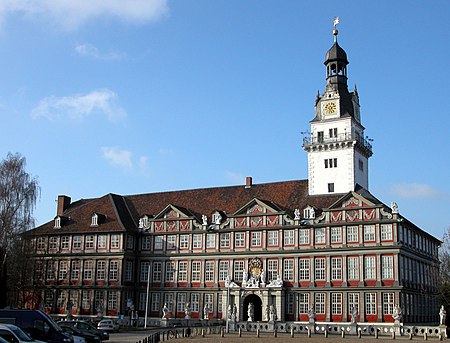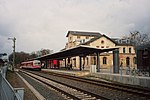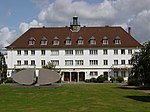Schloss Wolfenbüttel
Baroque architecture in Lower SaxonyBuildings and structures in WolfenbüttelCastles in Lower SaxonyRenaissance architecture in Germany

Schloss Wolfenbüttel is a castle in Wolfenbüttel, Lower Saxony, Germany. An extensive four-wing complex, it originated as a moated castle (Wasserburg). It is the second-largest surviving schloss in Lower Saxony and served as the main residence of the rulers of the Principality of Brunswick-Wolfenbüttel from 1432 to 1753. It now houses a gymnasium secondary school, the Federal Academy of Arts Education, and a museum with its historic rooms on display. Its immediate vicinity is home to several historically significant buildings including the Herzog August Bibliothek, the Lessinghaus, the Zeughaus, and the Kleines Schloss.
Excerpt from the Wikipedia article Schloss Wolfenbüttel (License: CC BY-SA 3.0, Authors, Images).Schloss Wolfenbüttel
Schloßplatz,
Geographical coordinates (GPS) Address Nearby Places Show on map
Geographical coordinates (GPS)
| Latitude | Longitude |
|---|---|
| N 52.162722222222 ° | E 10.529875 ° |
Address
Gymnasium im Schloss
Schloßplatz 13
38304 , Heinrichstadt
Lower Saxony, Germany
Open on Google Maps









